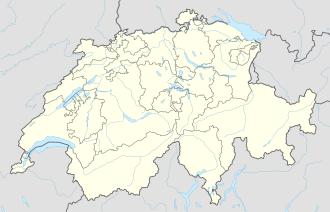| Fort de Cindey | |
|---|---|
| Part of Fortress Saint-Maurice | |
| Western Switzerland | |
 Rear of a 105mm gun at the Fort de Cindey | |
| Site information | |
| Controlled by | Switzerland |
| Open to the public | Yes |
| Condition | Preserved |
| Location | |
| Coordinates | 46°13′15″N7°00′12″E / 46.22074°N 7.00346°E |
| Site history | |
| Built | 1941-46 and 1948-1952 |
| Materials | Rock excavation |
The Fort de Cindey (Swiss designation A155) is a component of Fortress Saint-Maurice, which is in turn one of the three principal fortified regions of the National Redoubt of Switzerland. The Fort de Cindey was built in two steps: the first, between 1941 and 1946 and the second step, between 1948 and 1954 (the hospital, the artilleries casemates with the gunnery command and the ammunition magazines) . It was taken out of service in 1995. This fort was built in the Scex cliff face immediately to the west of Saint-Maurice to complement the existing Fort du Scex, built earlier in the same cliff. With the Fort du Scex, it comprises a fortress complex encased in rock high above the strategic Saint-Maurice valley. The fort was deactivated in 1995. It is now open for public tours during the summer months.
